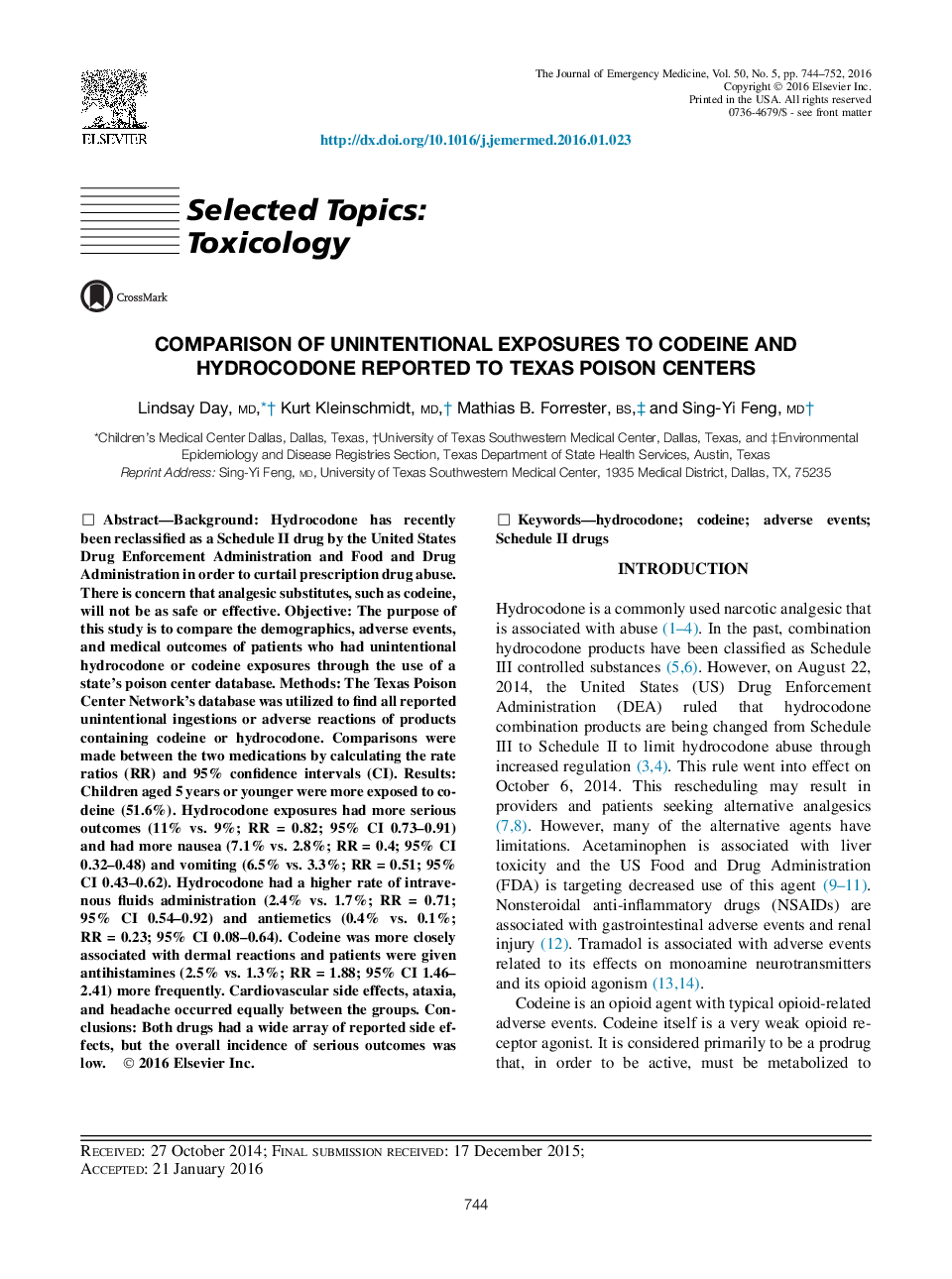| کد مقاله | کد نشریه | سال انتشار | مقاله انگلیسی | نسخه تمام متن |
|---|---|---|---|---|
| 3245816 | 1589113 | 2016 | 9 صفحه PDF | دانلود رایگان |
BackgroundHydrocodone has recently been reclassified as a Schedule II drug by the United States Drug Enforcement Administration and Food and Drug Administration in order to curtail prescription drug abuse. There is concern that analgesic substitutes, such as codeine, will not be as safe or effective.ObjectiveThe purpose of this study is to compare the demographics, adverse events, and medical outcomes of patients who had unintentional hydrocodone or codeine exposures through the use of a state's poison center database.MethodsThe Texas Poison Center Network's database was utilized to find all reported unintentional ingestions or adverse reactions of products containing codeine or hydrocodone. Comparisons were made between the two medications by calculating the rate ratios (RR) and 95% confidence intervals (CI).ResultsChildren aged 5 years or younger were more exposed to codeine (51.6%). Hydrocodone exposures had more serious outcomes (11% vs. 9%; RR = 0.82; 95% CI 0.73–0.91) and had more nausea (7.1% vs. 2.8%; RR = 0.4; 95% CI 0.32–0.48) and vomiting (6.5% vs. 3.3%; RR = 0.51; 95% CI 0.43–0.62). Hydrocodone had a higher rate of intravenous fluids administration (2.4% vs. 1.7%; RR = 0.71; 95% CI 0.54–0.92) and antiemetics (0.4% vs. 0.1%; RR = 0.23; 95% CI 0.08–0.64). Codeine was more closely associated with dermal reactions and patients were given antihistamines (2.5% vs. 1.3%; RR = 1.88; 95% CI 1.46–2.41) more frequently. Cardiovascular side effects, ataxia, and headache occurred equally between the groups.ConclusionsBoth drugs had a wide array of reported side effects, but the overall incidence of serious outcomes was low.
Journal: The Journal of Emergency Medicine - Volume 50, Issue 5, May 2016, Pages 744–752
